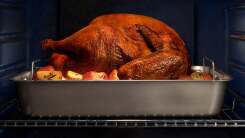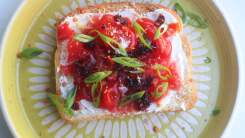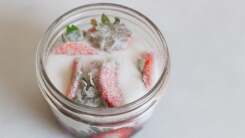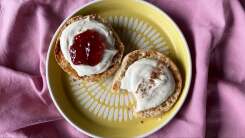The Difference Between Bay Scallops and Sea Scallops, and How to Cook Both
With the exception of lobster and certain crabs, few foods of the sea feel as decadent as scallops. They’re like little ocean marshmallows—soft, white, and sweet. If you are a regular visitor at seafood counters, you’ve probably noticed they mostly come in two sizes: little and not so little. The little ones are bay scallops, and the larger ones are sea scallops. The distinction matters.
Where do sea scallops and bay scallops come from?
Sea scallops, as the name suggests, are caught year-round in deep, cold ocean waters, though for sustainability reasons, farmed scallops have been growing in popularity for a few years now. Scallops are expensive boys, and there are usually 20–30 of them to a pound.
Bay scallops are caught in East Coast estuaries and bays, and about a third the size of sea scallops (50–100 per pound). You might also see (even smaller) Calico scallops being sold as “bay scallops,” but those are caught in the warmer waters of the Atlantic and Gulf Coast, as well as Central and South America. Calico scallops are the smallest and cheapest—you can get 100-200 in a pound.

Does it matter which ones you use?
Flavor-wise, all scallops are pretty sweet, though bay scallops can be slightly sweeter. Bay scallops are also more tender than sea scallops, which is great news, because they’re cheaper anyway. (It’s easier to get scallops out of the bay than it is to get them out of the sea. It all comes down to labor!)
You can use them interchangeably—just keep in mind that smaller scallops cook more quickly than larger ones, so shave a few minutes off the cook time if you’re replacing sea scallops with bay scallops, and increase it for the inverse. I cook all my scallops over high heat, usually in butter, until they develop a crust on each side. Neither large nor small scallops like to be crowded, so make sure there’s a little space in between them—otherwise they’ll steam, and steam is the enemy of browning.
No matter what kind or size of scallop you’re cooking, it should be opaque all the way through when you take it out of the pan. A seasoned scallop cooker can probably tell when one is done by pressing on it—it should be firm but still have some give—but I recommend slicing through a couple after cooking to check for opaqueness if you’re new to this particular shellfish.
What are “wet” and “dry” scallops?
Wet-packed scallops are treated with a sodium tripolyphosphate solution, which preserves them and helps them retain more water. This means that you end up paying for more water and less scallop, which is not my goal as a scallop shopper. Some people say wet scallops have a bouncier texture and a “soapier” taste.
Dry scallops are not treated with sodium tripolyphosphate and are usually a little tanner in color. They develop a better sear due to their lower moisture levels, because you don’t have all that water seeping out during the cooking process, preventing browning. Look for scallops with labels that say either “dry-packed” or “chemical-free.” (I personally hate the phrase “chemical-free” because everything—even scallops—is made up of chemicals, but the chemical in this instance is sodium tripolyphosphate.)
How to tell the difference
If you’ve already bought some scallops and don’t know if they’re wet or dry, you can use this Cook’s Illustrated microwave test to find out:
Put a scallop on a paper towel on a plate in the microwave, and microwave it for 15 seconds. If they’re dry scallops, there’ll be very little moisture released on the paper towel. If they’re wet scallops, there will be a noticeable ring of water around the scallop. You can still use that scallop to cook either way.
Either way, make sure you pat your scallops dry before cooking. You won’t be able to draw out all the moisture retained due to the sodium tripolyphosphate treatment, but at least the surface will sear a little better.









Comments on "The Difference Between Bay Scallops and Sea Scallops, and How to Cook Both" :